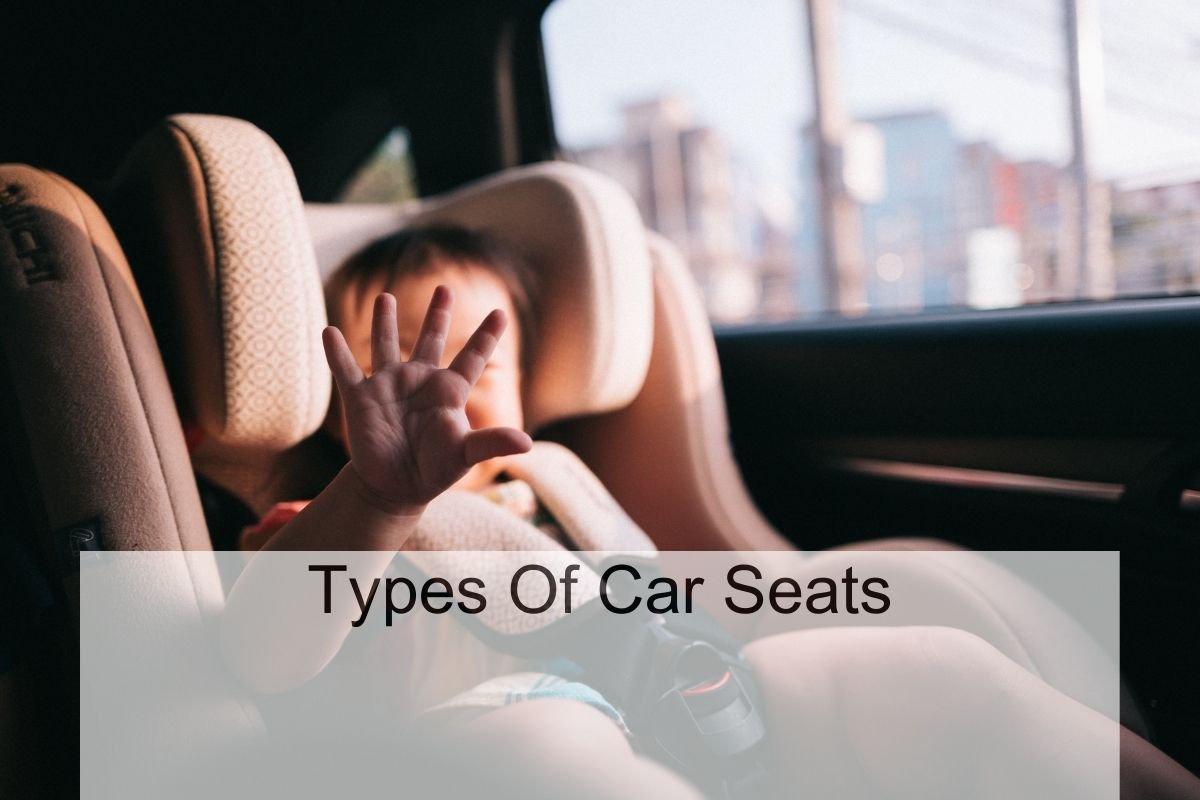As a parent, I understand how crucial it is to ensure my child’s safety while traveling in a car. One of the most important safety measures is choosing the right car seat for my child’s age, weight, and height. With so many options available, it can be overwhelming to decide which type of car seat to choose.

There are four main types of car seats: infant, convertible, 3-in-1, and booster. Each type is designed for a specific age range and weight limit. Infant car seats are rear-facing and designed for newborns up to around 2 years old. Convertible car seats can be used in both rear-facing and forward-facing positions, accommodating children from birth to around 4 years old. 3-in-1 car seats can be used as a rear-facing, forward-facing, and booster seat, accommodating children from birth to around 10 years old. Booster seats are designed for children who have outgrown their forward-facing car seat and are around 8 to 12 years old.
It’s important to note that each state has its own laws regarding car seat usage, so it’s essential to check the laws in your state and ensure that your child’s car seat meets those requirements. In this article, I will provide a detailed overview of each type of car seat, including their safety features, pros and cons, and installation tips to help you choose the right car seat for your child.
Infant Car Seats

I know how important it is to choose the right car seat for my little one. Infant car seats are designed for newborns and young babies, and they offer a safe and comfortable way to transport them in a car.
Infant car seats are rear-facing, which means that they are installed facing the back of the car. This is the safest position for a baby in a car, as it provides the most protection for their head, neck, and spine in the event of a crash.
When choosing an infant car seat, it’s important to consider the weight and height limits. Some infant car seats are designed for smaller babies, while others can accommodate larger infants. It’s important to choose a car seat that fits your baby properly and provides the necessary support.
Additionally, some infant car seats can be used as part of a travel system, which means that they can be attached to a stroller for easy transportation. This can be a convenient option for parents who want to be able to move their baby from the car to the stroller without having to take them out of the car seat.
Convertible Car Seats

I know that choosing the right car seat for my child can be a daunting task. However, convertible car seats offer a versatile and cost-effective solution for parents who want to keep their child safe on the road. These seats can be used in both rear-facing and forward-facing positions, making them suitable for infants and toddlers alike.
Rear-Facing Convertible Seats
Rear-facing convertible seats are designed to keep infants safe in the event of a crash. They have a weight limit of up to 40 pounds and a height limit of up to 40 inches. These seats provide the necessary support for a baby’s head, neck, and spine, which are still developing during the first year of life. Additionally, they are equipped with a five-point harness that ensures that the child is securely fastened in the seat.
Forward-Facing Convertible Seats
Once your child has outgrown the rear-facing position, it’s time to switch to a forward-facing convertible seat. These seats are designed for children who weigh between 20 and 65 pounds and are up to 50 inches tall. They also have a five-point harness that keeps your child secure in the seat. Some models come with a removable harness, which can be replaced with a seat belt once your child reaches a certain weight.
Booster Seats

As my child grows, I know that I will need to transition them to a booster seat. Booster seats are designed for children who have outgrown their car seats but are not yet big enough to use the regular seat belt. There are three types of booster seats: backless, high-back, and combination.
Backless Booster Seats
Backless booster seats are the simplest type of booster seat. They are designed to raise the child up so that the seat belt fits properly across their lap and chest. They do not have a back or headrest, so they are best for cars that already have headrests built-in. Backless booster seats are lightweight and easy to move from one car to another.
High-Back Booster Seats
High-back booster seats have a back and a headrest that provide extra support and protection for the child. They are best for cars that do not have built-in headrests. The high back also provides protection for the child’s head and neck in the event of a side-impact collision. Some high-back booster seats also have adjustable headrests and backrests, which can be useful as the child grows.
Combination Booster Seats
Combination booster seats can be used as both a car seat with a harness and a booster seat with a regular seat belt. They are designed for children who are too big for a car seat but not yet big enough for a regular seat belt. Combination booster seats are a good option for parents who want to save money by buying one seat that will last for several years. They can be used as a car seat for younger children and then converted to a booster seat as the child grows.
All-In-One Car Seats

I know how important it is to choose the right car seat for my child’s safety and comfort. That’s why I want to talk about all-in-one car seats. These car seats are designed to grow with your child, from infancy to toddlerhood and beyond. They can be used as rear-facing car seats, forward-facing car seats, and even booster seats.
One of the benefits of all-in-one car seats is that you only need to buy one seat instead of multiple seats as your child grows. This can save you money in the long run. Additionally, all-in-one car seats usually have enhanced safety features to protect your child at every stage.
When it comes to installation, all-in-one car seats can be a bit more complicated than other types of car seats. However, many models come with easy-to-follow instructions and installation videos to help you get it right. You can also have your car seat inspected by a certified technician to ensure that it’s installed correctly.
It’s important to note that all-in-one car seats are not the best fit for every family. If you have a small car, an all-in-one car seat may not fit comfortably. Additionally, if you plan on having more children, you may need to buy multiple car seats anyway.
Specialty Car Seats
As a loving parent, I understand that some babies may need special car seats due to their unique needs. In this section, I will discuss two types of specialty car seats that can provide additional comfort and safety for your little one.
Travel Car Seats
If you love to travel with your baby, a travel car seat can be a great investment. These car seats are designed to be lightweight and portable, making them easy to carry around airports or on road trips. They are also easy to install in rental cars or taxis, so you can ensure your baby is safe no matter where you go.
One example of a great travel car seat is the Cosco Scenera NEXT. It is lightweight and compact, making it easy to carry around. It is also FAA-approved for use on airplanes, so you can take it with you on your next family vacation.
Car Beds for Preemies
Premature babies require special care and attention, and that includes when they are in the car. Car beds for preemies are designed to provide additional support and protection for babies who are born prematurely or have low birth weights.
One example of a great car bed for preemies is the Graco SnugRide SnugLock 35 DLX Infant Car Seat. It is designed to provide additional support for premature babies, with a removable newborn head and body support. It is also easy to install and adjust, so you can ensure your baby is comfortable and safe on every car ride.
Car Seat Accessories
As a loving parent, I know that my child’s safety is a top priority. That’s why I always make sure to use the right car seat and accessories to keep my child secure and comfortable during car rides. Here are some of the car seat accessories that I find helpful:
Seat Protectors
Seat protectors are a great accessory to have if you want to keep your car seats clean and free from damage. They are designed to fit under your child’s car seat and protect your car’s upholstery from spills, crumbs, and scratches. Some seat protectors come with pockets to store toys and snacks, making them a convenient addition to your car.
Mirrors
Mirrors are essential for parents who want to keep an eye on their child while driving. They attach to the back of the car seat and allow you to see your child’s face in the rearview mirror. This is especially useful for parents of infants who need to be rear-facing in the car. With a mirror, you can check on your child without having to turn around or take your eyes off the road.
Window Shades
Window shades are a must-have accessory for parents who want to protect their child from the sun’s harmful rays. They attach to the car window with suction cups and can be easily removed when not in use. Window shades come in different sizes and shapes to fit your car’s windows, and some even have cute designs to keep your child entertained during the ride.

